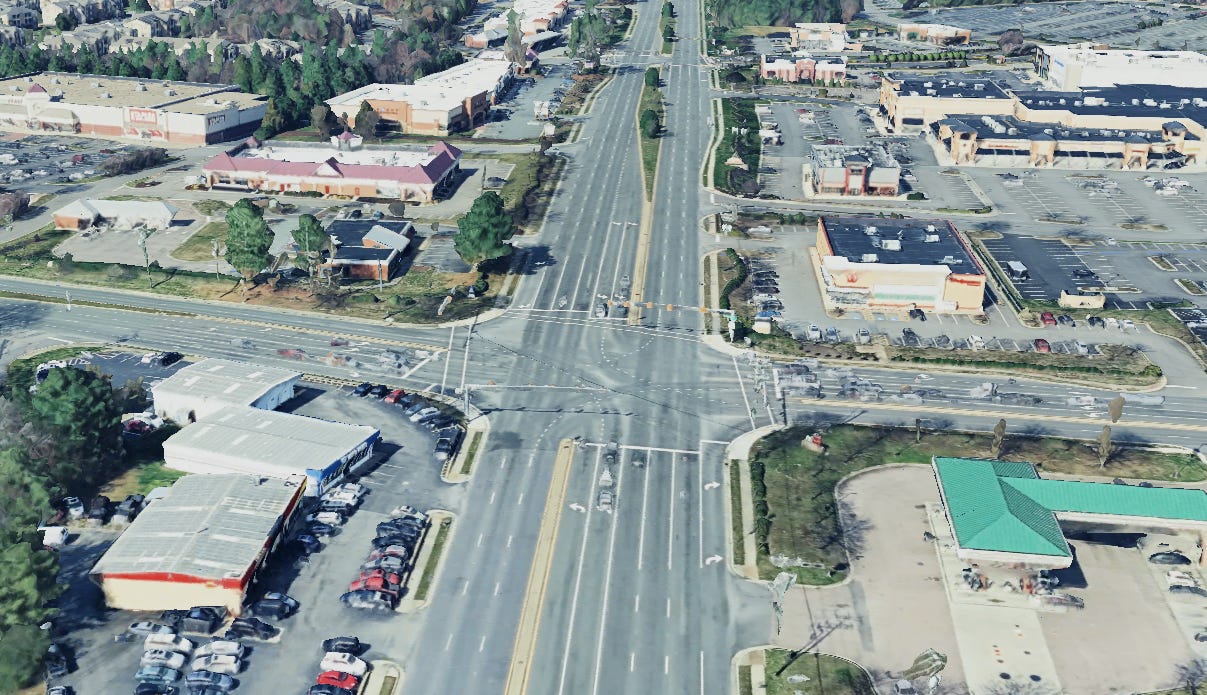Traffic crashes are a PREVENTABLE menace
...but an awful lot of people aren't going to like the proven method of prevention.

If you tell yourself that safety advocates are exaggerating or sensationalizing the dangers on public roads, it’s easy to dismiss the pleas for change. Even if you believe the passionate advocates, abstract stats are hard for the human mind to process. Do we really need this traffic calming project? Is that road diet to create bike lanes really necessary? Aren’t speed cameras a bit much?
Using the National Highway Traffic Safety Administration data as a baseline, about 40,000 people are killed in traffic crashes in the US every year. That’s worse than a 9/11 attack every month with no end in sight. On top of that, researchers estimate more than 300,000 people suffer a severe or incapacitating injury in crashes every year. Those are people who lived, but will spend months or years recovering while they’re dealing with the extraordinary financial hit of medical care.
If there’s one thing I want you to remember, it’s two things: (1) severe crashes are preventable and (2) speed is the key.
We can learn physics or ignore physics, but physics will continue impacting our lives. As vehicle speeds rise, so does the severity and likelihood of crashes.
Crash Energy = ½ mv2 (where m is mass and v is velocity)
All those years ago, Isaac Newton was trying to tell us that traffic calming is a pretty big deal. Higher speeds result in disproportionately higher kinetic energy. It’s the speed-squared part of the equation that does the most damage on city and suburban streets.
Seemingly small changes in speed make a world of difference. When you go from 20 to 30 mph, the kinetic energy nearly doubles. A crash at 30 mph is disproportionately more destructive than one at 20 mph. At 40 mph, a vehicle's kinetic energy is almost four times greater than at 20 mph. Now think how common it is to see 45 mph speed limits on suburban roads with lots of driveways and intersections, knowing hardly anyone is driving at or below the posted speed limit.
There’s no reason to tolerate high speeds in areas with population clusters like cities and the suburbs. Interstate highways are an altogether different story, and those systems should be treated differently. People aren’t turning in and out of driveways on the interstate, and they certainly aren’t walking or bicycling.
Professionals are aware of the deadly toll of traffic crashes, but the same philosophy continues to be applied to infrastructure planning. The root cause is looking for ways to make streets more efficient for motorized traffic instead of safer for people in and out of vehicles.
Here’s the standard process that makes everything a blur at street level:
Document car speeds through busy intersections during the two busiest hours of a day.
Note that speeds during those two busiest hours are below the posted speed limit.
List options for expanding the street to “increase vehicular efficiency.”
Approve and construct expansion in order to increase vehicular speeds efficiency.
Begin a new study to determine why speeding vehicles are crashing so often.
American infrastructure in populous areas continues to be built for speedy traffic. Here are some ways that street networks in cities and suburbs are designed for speed. I’m purposefully using the language you’ll see in traffic studies to help you recognize it.
12-ft wide travel lanes are the norm, even though that width encourages fast driving.
Large turning radii at driveways and intersections are the norm, encouraging faster driving around corners, without pausing for people walking across side-streets.
Large clear zones so that drivers can have unobstructed views, which makes them feel more confident driving faster than they ought.
Multiple turn lanes are constructed to increase vehicle throughput, which makes streets more dangerous for people to walk or ride bicycles.
A transportation system optimized for “vehicular efficiency” AND safety. As long as speed is prioritized, the severe crashes will continue. It’s worth speaking up any time you have the chance, because without a grassroots cultural revolt, very little will change. If you feel intimidated by the professionals, start by making this simple statement and asking for a response: Traffic crashes are preventable and speed is the key.



Oh how I wish our speed limits on our Orange County stroads was only 35 or 45 mph! 55 mph is much more common, and the roads are designed to make it feel safe when you drive 65 mph. And then they paint a thin while line to demarcate a so-called bike lane that of course disappears to almost nothingness whenever they need space for a turn lane—and expect us to ride bikes there, rather than on the 10’ wide side walks where no-one walks and which would be perfect for biking!
This is an interesting counter point in the argument:
"There’s no reason to tolerate high speeds in areas with population clusters like cities and the suburbs. Interstate highways are an altogether different story, and those systems should be treated differently. People aren’t turning in and out of driveways on the interstate, and they certainly aren’t walking or bicycling."
It makes sense that highways are totally different modes of traffic than a residential area and yet casual onlookers perceive laws governing these roads as the same. I consistently drive 5 miles over the speed limit no matter where-- and this isn't right, and I need to drive slower. Because the roads have different interweaving traffic patterns, there is more risk in increasing speed in neighborhood driving than on interstates.
Thanks for the insight.